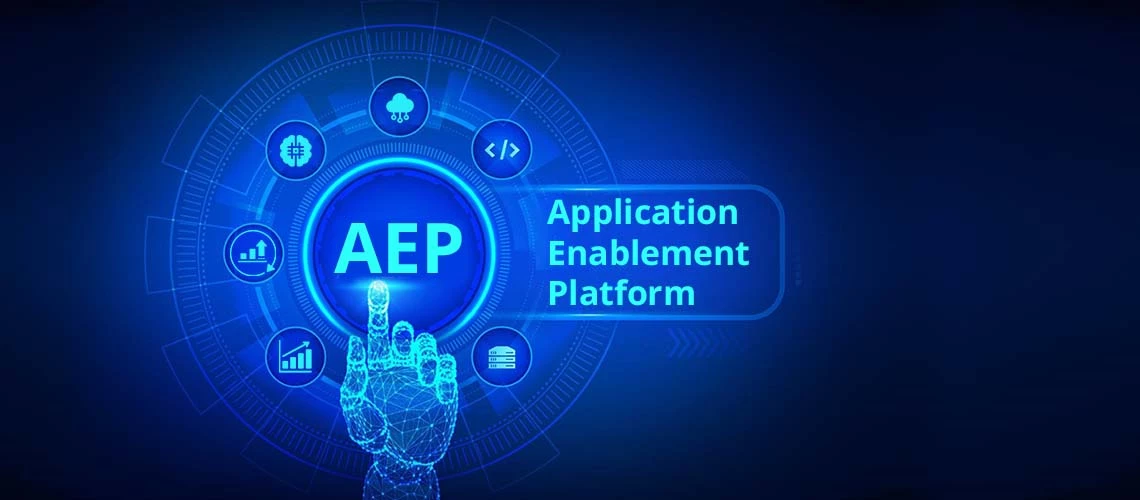
Introduction: The Need for Better IoT Application Enablement
The important economic value of the Internet of Things (IoT) applications is becoming apparent to almost all enterprises from industrial process applications to smart manufacturing/lighting/buildings/lighting/cities/energy, and more, across virtually all industry verticals. According to a recent Kaspersky study, 61% of businesses are using the internet of things to bolster their operations. Still, we remain at the “foot of the curve” with many gains ahead as the IoT ecosystem makes it easier for enterprises to fully implement IoT solutions. Application Enablement Platforms and Rapid Application Development will be a key part of this.
As a result of this inherent complexity, it is easy for even experienced teams to see the costs and schedules for IoT programs to get out of control, leading to disappointing results, or even abandoned projects. Many believe this to be the reason for the slower than anticipated delivery of the economic benefits of IoT. While low-cost sensors and edge processing, ubiquitous communications (WiFi, LTE, LTE-M, LoRa, etc.), low-cost cloud computing, and powerful open-source software are all available, the complexity of putting together unique/bespoke applications remained a barrier to success. Simply put, the overhead and complexity of composing these entire stacks and then building custom applications on top – even when using the very nice tools from the IoTaaS providers – has been too hard.
IoT Application Enablement Platforms (AEP) squarely address exactly this issue, opening the door for enterprises, operators, and OEM to finally realize the full economic benefits of IoT.
IoT Application Enable Platform (AEP) – The Architectural Building BlocksAccording to IoT Analytics, an AEP consists of eight key aspects:
- Connectivity and Normalisation- simplifies connectivity of different devices, protocols, and a variety of data formats into one software interface to ensuring continuous connectivity, accurate data streaming, the interaction between various devices, and harmonized data formats. Simplified data transform and normalization is an important AEP function.
- Device Management– delivers lifecycle management functionality for connected devices, including device onboarding, deployment of software and firmware updates, and configuration of managed devices.
- Database- cloud-based repository scalable in terms of data volume, velocity, variety, and veracity. Top AEPs will provide multiple databases to optimize based on data types, and also simplify cross-application communications, in effect providing data-lake functions.
- Processing and Action Management – provides a rule engine that enables rule-based event-action triggers, to launch diverse actions based on real-time data stream processing. Also, provide the infrastructure to host more complex event handlers.
- Analytics– uses algorithms for a variety of calculations, from basic data clustering to predictive analytics obtaining the most value from data-stream. The best AEPs will provide both no-code (automatic) as well as custom algorithm & analytics hosting & operation.
- Visualization- enables the graphical display of real-time and historical data, enabling patterns and trends observed in visualization dashboards and reports. The best AEPs will provide built-in dashboards, dashboard creation, and new Application Creation workflows.
- Additional tools– allows developers to prototype, test, and market their IoT use cases by creating apps that enable them to visualize, manage and control connected devices.
- External interfaces -include APIs, libraries, SDKs, and gateways facilitate integration with third-party systems and enable leverage of the rest of the IT ecosystem.
A best-in-class AEP will not only provide a secure, reliable, and scalable underlying IoT platform with all of the essential technology and service components, but will also provide a complete set of tools and workflows to enable the efficient creation of unique/bespoke applications. Using an AEP, the creation of sophisticated new applications now takes days or weeks – instead of months or even years. By adopting an AEP, enterprises, operators, and OEMs can much more directly apply their skills and industry know-how to in-demand customer solutions – instead of underlying complexity.
A high-level drawing covering some of the aspects of the IoT83 AEP solution is shown here:
And beyond the underlying secure, reliable, and scalable platform and application creation tools, the AEP approach would be to provide a location-tracking feature instead of a more restrictive fleet tracking feature. Or, and AEP would provide Alarm & Alerts prioritization and management modules and anomaly detection and diagnostic modules & building blocks versus hard-coded solutions. Tools like modules and workflows to accelerate the creation of application-specific Predictive Maintenance solutions enable an AEP to increase the scope and value of the “Lego Blocks” you need to realize your complete and powerful application – all accelerating your IoT value creation. So, and AEP will dramatically accelerate the creation of your “first iteration” application, but will also make it easy to iteratively add layers of sophistication, connectivity to other systems, add new customer features, and much more.
For an apt comparison – think hover-craft Vs horse & buggy. It is that big a difference!
For the story on the “Criticality of AEPs for IoT”, and to better understand why utilization of AEP technology makes the difference between success and failure, download the White Paper Link Below!
